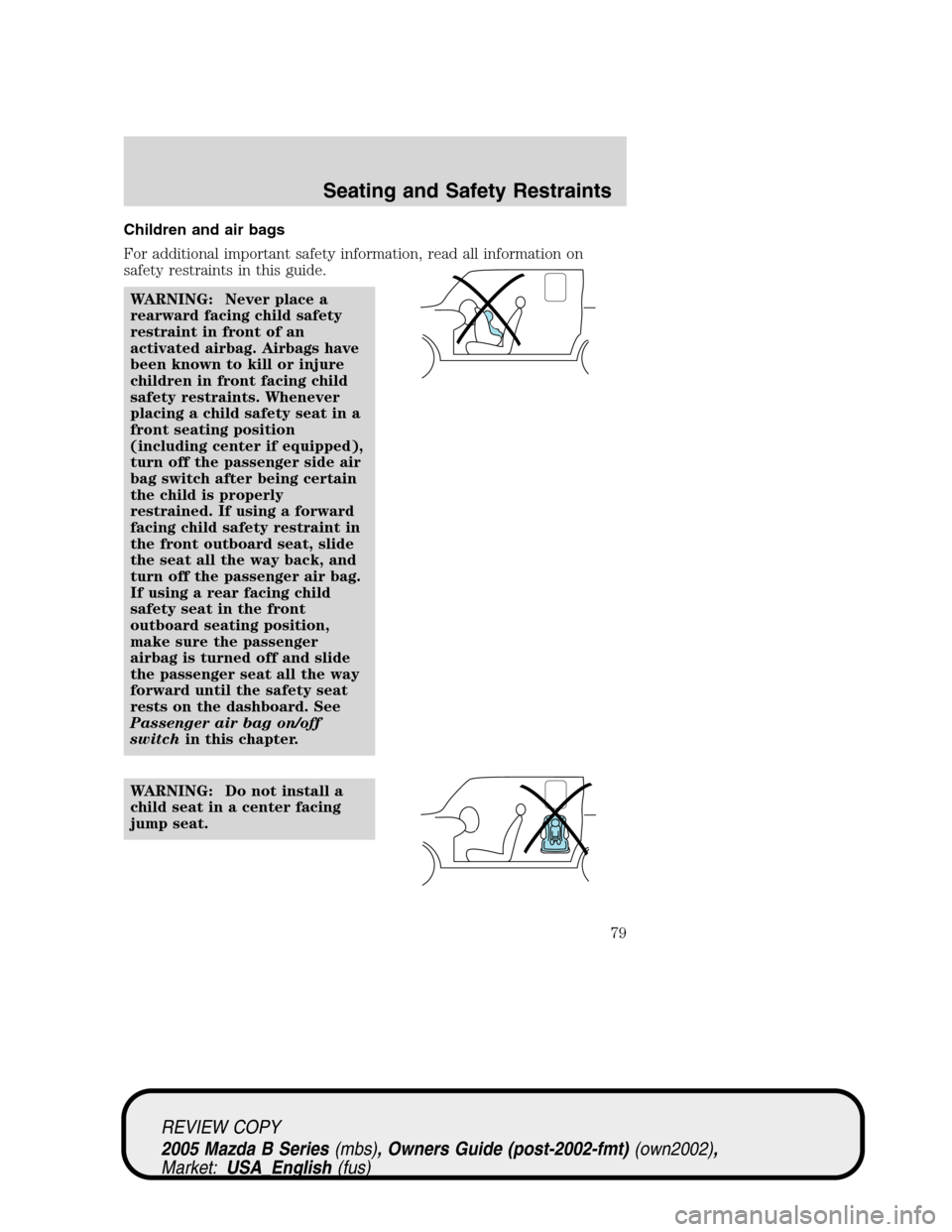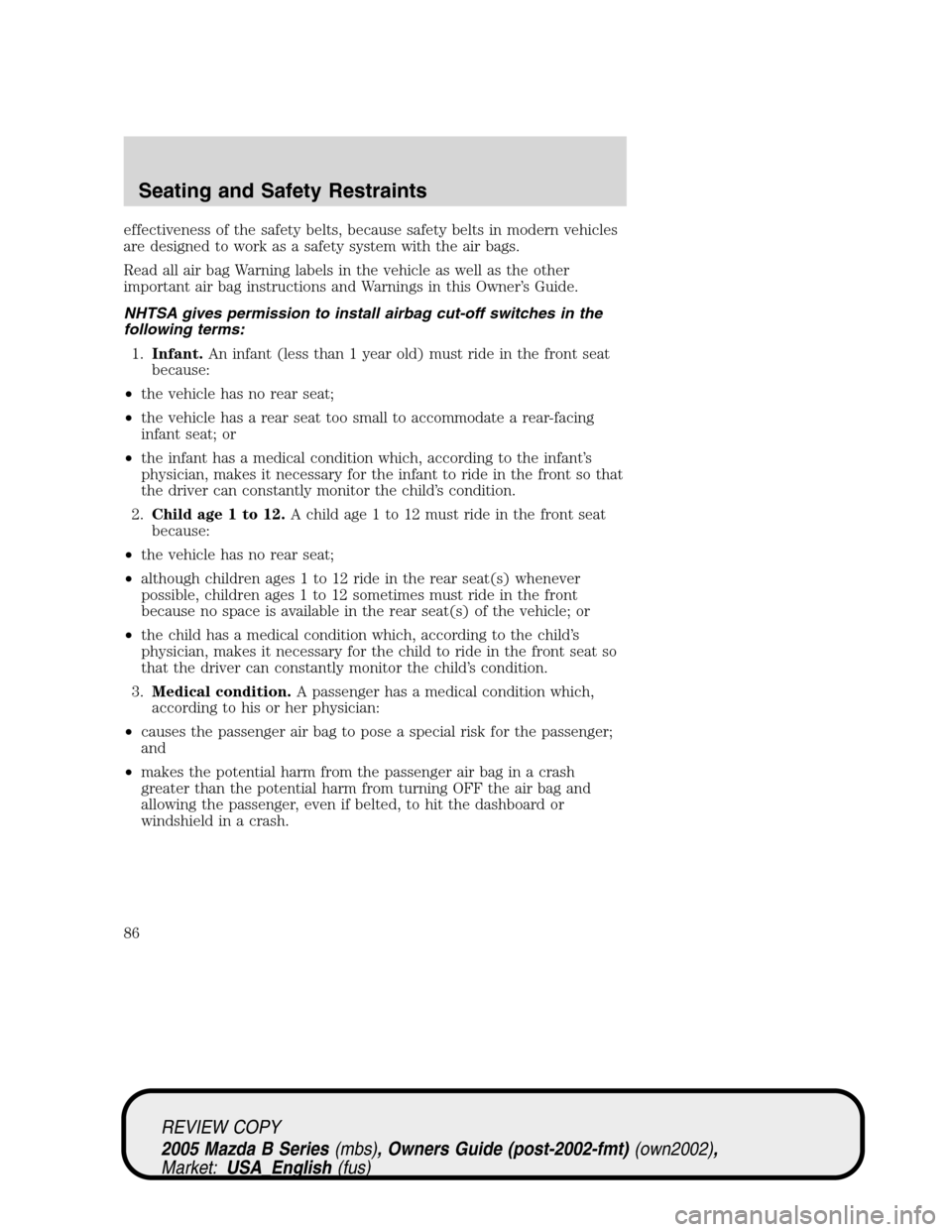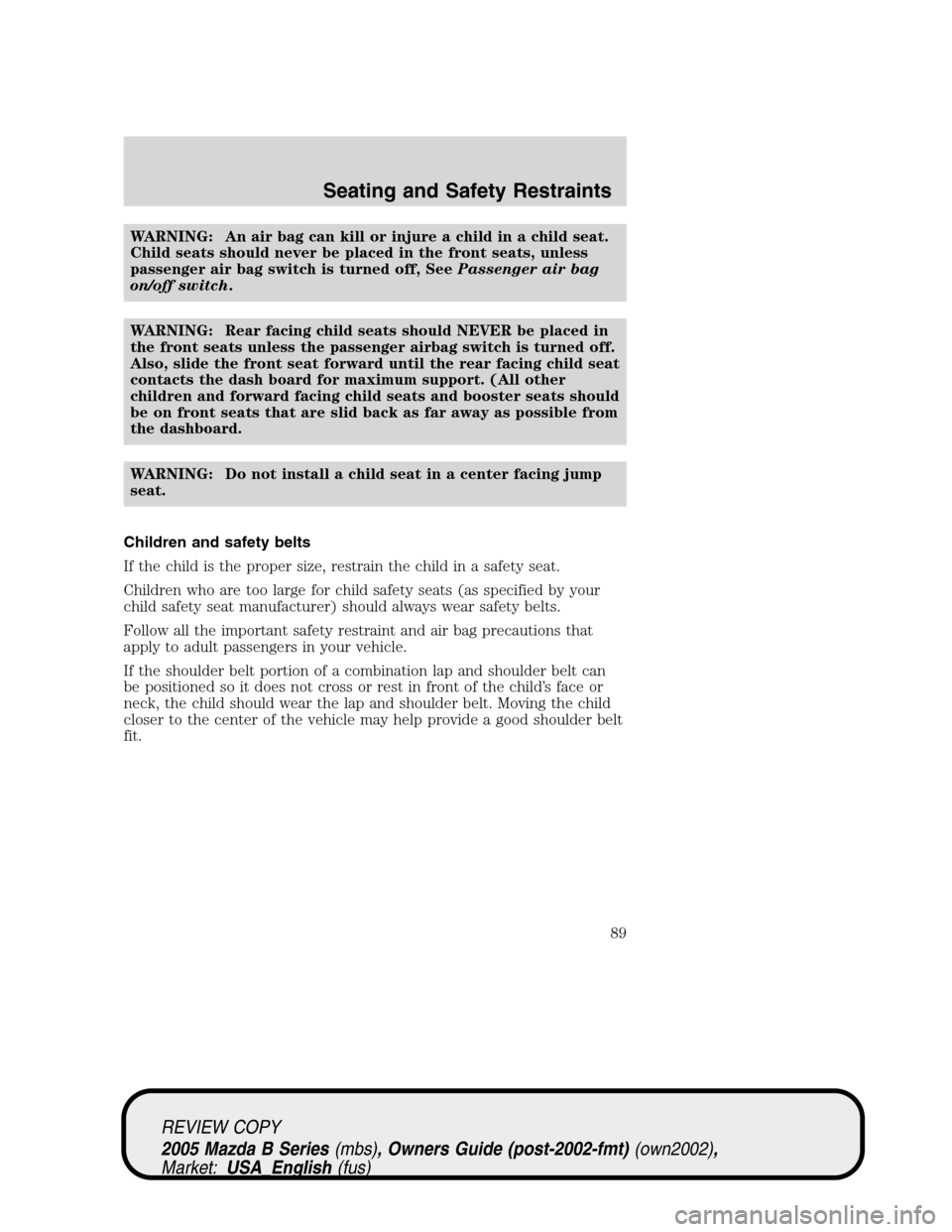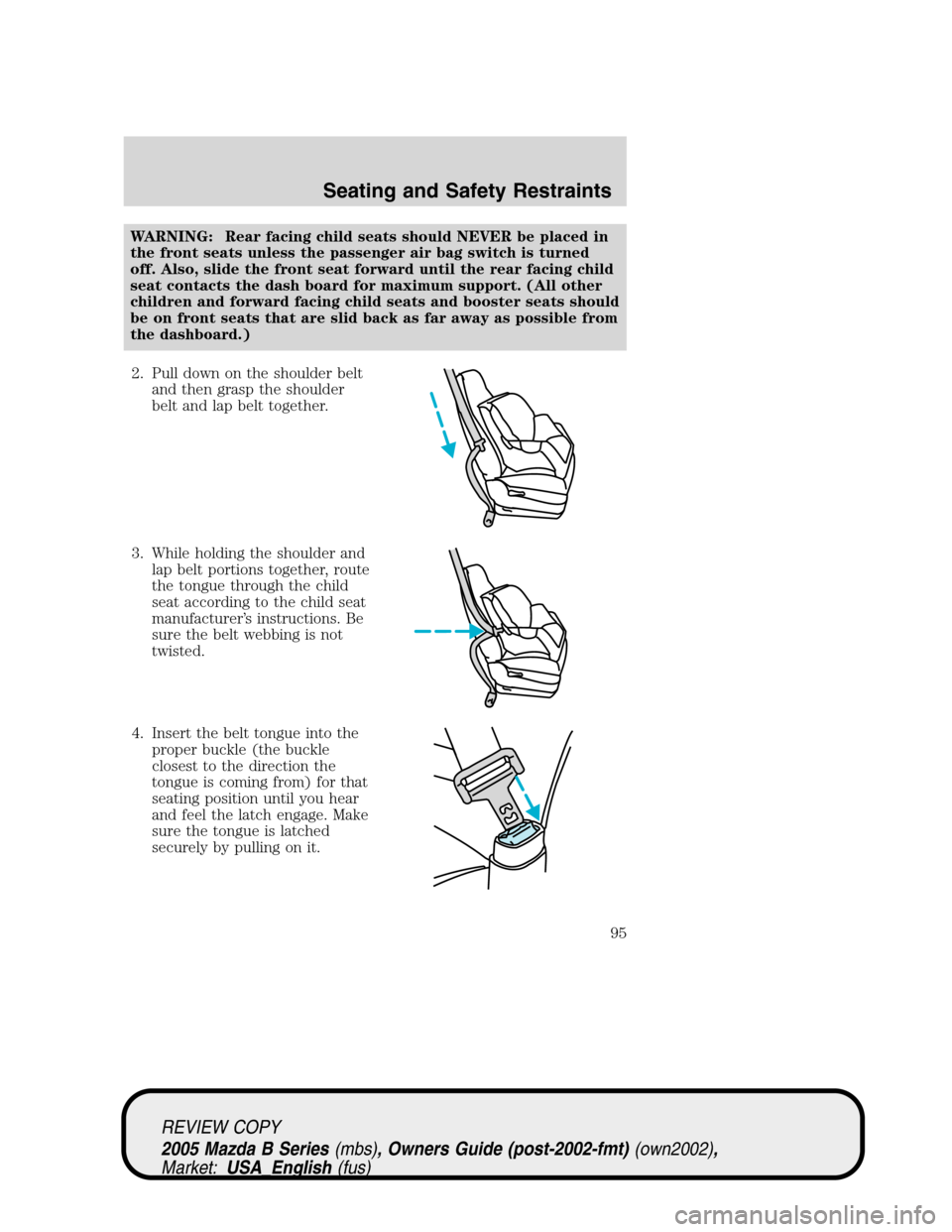dashboard MAZDA MODEL B2300 TRUCK 2005 Owners Manual (in English)
[x] Cancel search | Manufacturer: MAZDA, Model Year: 2005, Model line: MODEL B2300 TRUCK, Model: MAZDA MODEL B2300 TRUCK 2005Pages: 257, PDF Size: 2.8 MB
Page 80 of 257

Children and air bags
For additional important safety information, read all information on
safety restraints in this guide.
WARNING: Never place a
rearward facing child safety
restraint in front of an
activated airbag. Airbags have
been known to kill or injure
children in front facing child
safety restraints. Whenever
placing a child safety seat in a
front seating position
(including center if equipped),
turn off the passenger side air
bag switch after being certain
the child is properly
restrained. If using a forward
facing child safety restraint in
the front outboard seat, slide
the seat all the way back, and
turn off the passenger air bag.
If using a rear facing child
safety seat in the front
outboard seating position,
make sure the passenger
airbag is turned off and slide
the passenger seat all the way
forward until the safety seat
rests on the dashboard. See
Passenger air bag on/off
switchin this chapter.
WARNING: Do not install a
child seat in a center facing
jump seat.
REVIEW COPY
2005 Mazda B Series(mbs), Owners Guide (post-2002-fmt)(own2002),
Market:USA_English(fus)
Seating and Safety Restraints
79
Page 87 of 257

effectiveness of the safety belts, because safety belts in modern vehicles
are designed to work as a safety system with the air bags.
Read all air bag Warning labels in the vehicle as well as the other
important air bag instructions and Warnings in this Owner’s Guide.
NHTSA gives permission to install airbag cut-off switches in the
following terms:
1.Infant.An infant (less than 1 year old) must ride in the front seat
because:
•the vehicle has no rear seat;
•the vehicle has a rear seat too small to accommodate a rear-facing
infant seat; or
•the infant has a medical condition which, according to the infant’s
physician, makes it necessary for the infant to ride in the front so that
the driver can constantly monitor the child’s condition.
2.Child age 1 to 12.A child age 1 to 12 must ride in the front seat
because:
•the vehicle has no rear seat;
•although children ages 1 to 12 ride in the rear seat(s) whenever
possible, children ages 1 to 12 sometimes must ride in the front
because no space is available in the rear seat(s) of the vehicle; or
•the child has a medical condition which, according to the child’s
physician, makes it necessary for the child to ride in the front seat so
that the driver can constantly monitor the child’s condition.
3.Medical condition.A passenger has a medical condition which,
according to his or her physician:
•causes the passenger air bag to pose a special risk for the passenger;
and
•makes the potential harm from the passenger air bag in a crash
greater than the potential harm from turning OFF the air bag and
allowing the passenger, even if belted, to hit the dashboard or
windshield in a crash.
REVIEW COPY
2005 Mazda B Series(mbs), Owners Guide (post-2002-fmt)(own2002),
Market:USA_English(fus)
Seating and Safety Restraints
86
Page 90 of 257

WARNING: An air bag can kill or injure a child in a child seat.
Child seats should never be placed in the front seats, unless
passenger air bag switch is turned off, SeePassenger air bag
on/off switch.
WARNING: Rear facing child seats should NEVER be placed in
the front seats unless the passenger airbag switch is turned off.
Also, slide the front seat forward until the rear facing child seat
contacts the dash board for maximum support. (All other
children and forward facing child seats and booster seats should
be on front seats that are slid back as far away as possible from
the dashboard.
WARNING: Do not install a child seat in a center facing jump
seat.
Children and safety belts
If the child is the proper size, restrain the child in a safety seat.
Children who are too large for child safety seats (as specified by your
child safety seat manufacturer) should always wear safety belts.
Follow all the important safety restraint and air bag precautions that
apply to adult passengers in your vehicle.
If the shoulder belt portion of a combination lap and shoulder belt can
be positioned so it does not cross or rest in front of the child’s face or
neck, the child should wear the lap and shoulder belt. Moving the child
closer to the center of the vehicle may help provide a good shoulder belt
fit.
REVIEW COPY
2005 Mazda B Series(mbs), Owners Guide (post-2002-fmt)(own2002),
Market:USA_English(fus)
Seating and Safety Restraints
89
Page 96 of 257

WARNING: Rear facing child seats should NEVER be placed in
the front seats unless the passenger air bag switch is turned
off. Also, slide the front seat forward until the rear facing child
seat contacts the dash board for maximum support. (All other
children and forward facing child seats and booster seats should
be on front seats that are slid back as far away as possible from
the dashboard.)
2. Pull down on the shoulder belt
and then grasp the shoulder
belt and lap belt together.
3. While holding the shoulder and
lap belt portions together, route
the tongue through the child
seat according to the child seat
manufacturer’s instructions. Be
sure the belt webbing is not
twisted.
4. Insert the belt tongue into the
proper buckle (the buckle
closest to the direction the
tongue is coming from) for that
seating position until you hear
and feel the latch engage. Make
sure the tongue is latched
securely by pulling on it.
REVIEW COPY
2005 Mazda B Series(mbs), Owners Guide (post-2002-fmt)(own2002),
Market:USA_English(fus)
Seating and Safety Restraints
95